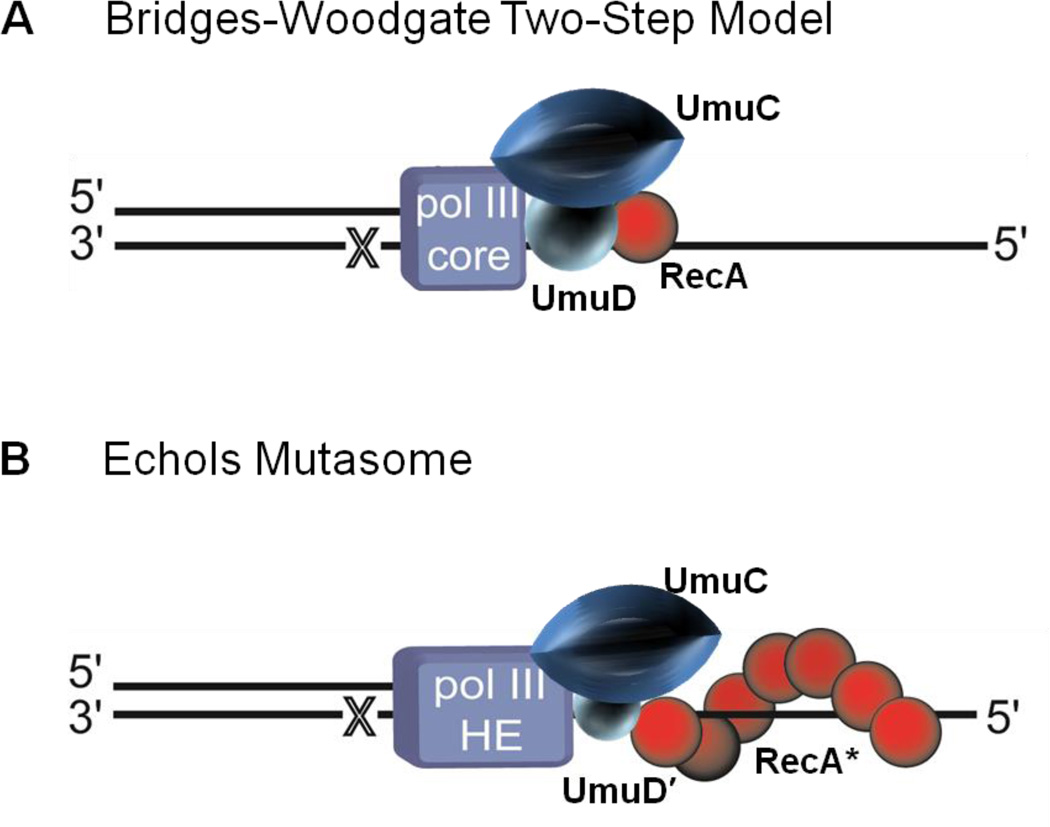Figure 2.
Translesion synthesis (TLS) models before 1998. (A) The Bridges–Woodgate two-step model.31 In this model translesion synthesis (TLS) is catalyzed by DNA polymerase (pol) III that requires a RecA molecule for nucleotide insertion opposite a template lesion (X) and then requires the UV mutagenesis gene products UmuDC to copy past the lesion. (B) The Echols mutasome model.35 RecA nucleoprotein filament (RecA*) assembles in cis at a lesion site (X) on the template strand of DNA being copied. A multiprotein complex, including pol III holoenzyme, UmuC, and UmuD', is then recruited to the DNA allowing TLS resulting in mutations targeted opposite the lesion.

